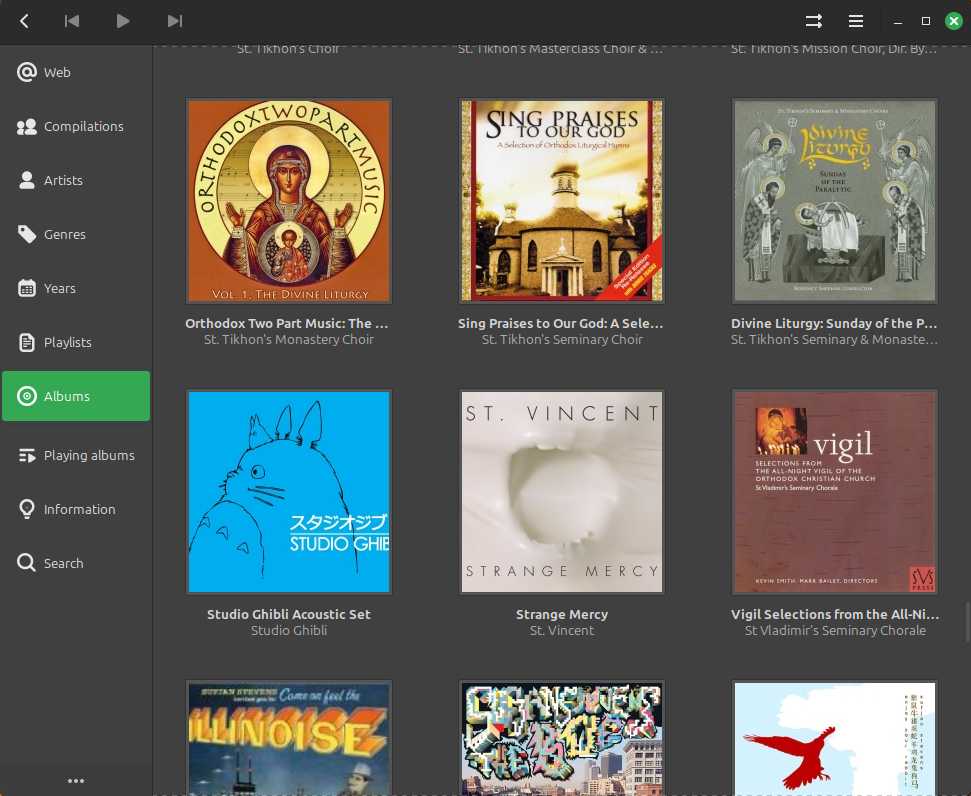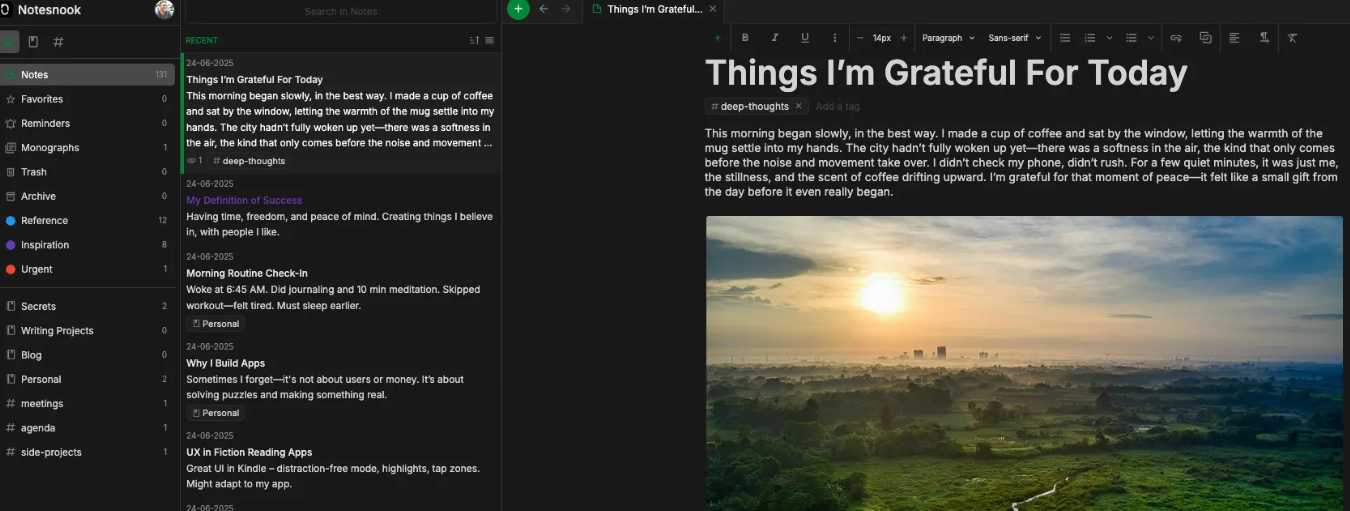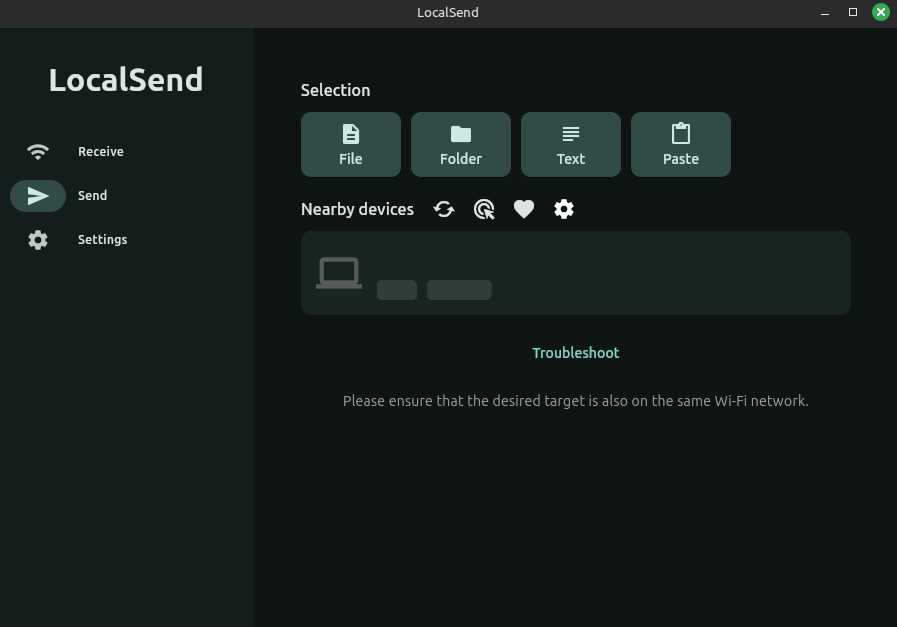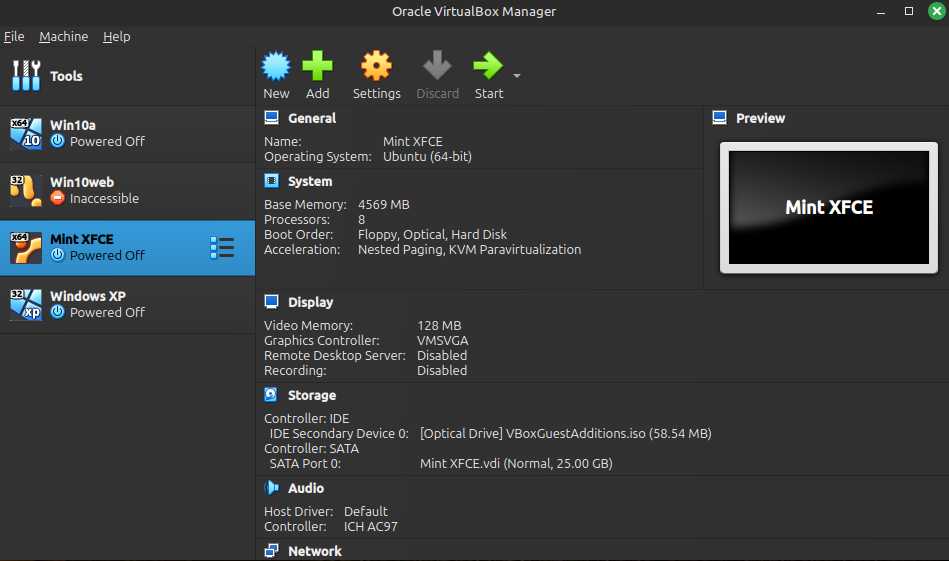In this entirely subjective article, I’ll give what I find to be among my four favorite Linux apps that make my life easier. Many of these are available for Windows, so if you’re still on Windows, you can download and start learning them. I won’t be reviewing extremely common apps like Brave, Firefox, Thunderbird, LibreOffice, etc. I think most people are familiar with those apps and already have opinions on them. Here, I’ll present less common apps that I wish I’d known about when I first switched to Linux. All these make my daily life easier, more productive, or more fun.
(Note: Most of these can be installed from your software manager in your Linux distro. Also note, I have the dark theme turn on, and most of these apps are theme responsive. If you prefer the light themes, then the apps will likely display with a lighter background.)
1. Lollypop

This media player is WAY better than the default Rhythmbox that most Linux distros come with. It’s more like Windows Media Player with album art that you click on to navigate. It’s good for highly visual people who just don’t do as well with media players that are more text-based.
2. Notesnook

I like to keep my notes end-to-end encrypted, and I like to be able to access them whether I’m on Linux, Windows, macOS, iOS, or Android. Notesnook does all that for free. Their free version has significantly more features than StandardNotes and is far more pleasant to use. I highly recommend it!
3. LocalSend

What if you could get something similar to iOS’s Airdrop on every device? That’s kind of what LocalSend is like. However, instead of using Bluetooth or NFC, it uses WiFi to quickly share photos, videos, and whatever else with family and friends who are nearby and on the same WiFi network. I use it to not only share family photos but also to send files quickly and easily to my Linux desktop.
If you download LocalSend but can’t get it to work, it may be due to firewall issues. If so, you may need to either add an rule/exception for the app or temporarily disable your firewall to allow incoming connections.
4. VirtualBox

Oracle’s VirtualBox is not at all unique to Linux, and was not even originally made for Linux. However, it’s an easy-to-use and powerful piece of software that is great for either testing operating systems or keeping an OS permanently sandboxed.
I use this almost daily so that I can run Microsoft Office on my Linux machine. I have a Windows 10 Virtual Machine that I set up about two years ago. I bought an old copy of MS Office 2016 that I installed, activated, and then updated in the VM. After downloading and installing all the apps that I need, I permanently cut off the internet. I then allowed it to access several folders on my computer so that I can access and edit all my necessary files.
I love this application because it allows me nearly all the features of running Windows but with the privacy of Linux. Of course, my particular use case is private because I cut the Windows virtual computer off from the internet.
There are numerous websites and YouTube videos that you can watch that will give you a tutorial on how to setup VBox with Windows on a Linux computer. I was super intimidated by the thought of doing it at first, but once I got started, I realized it’s not that hard. If you’ve ever installed Windows on a computer, you can handle this. You’re simply installing it on a software emulator.
Honorable Mentions
These apps are worth mentioning because they also make my digital life better:
- QRedshift – an Applet for Linux Mint that enables me to filter blue light and achieve deep reds with the screen. It also allows me to dim the screen. The Night Light that comes with Windows, macOS, and other Linux distros just doesn’t compare.
- MEGA – an end-to-end encrypted storage provider that offers a generous 15 GB of free storage. After actively using my account for a year, they offered me a cheaply priced basic account with 50 GB of storage.
- Syncthing – I run Ubuntu Server on an old PC and I use Syncthing to frequently back up my data on my main computer so that if it ever crashes or the SSD dies, I’ll have a back up of my entire Home folder.
- Pinta – kind of like a scaled down, simplified version of Paint.NET. Not as robust as Paint.NET, but it’s easy and intuitive to use. On rare occasions, I’ll run Paint.NET in VirtualBox for more complicated work.
- Reaper – I used to write and record music weekly, even daily. For about a decade, Sonar’s Cakewalk was my go-to DAW. Reaper has been a decent replacement for Cakewalk. It has an unlimited trial period that is fully functional and purchasing a license is cheaper than most other recording systems. It’s not as pretty to look at, but it’s very functional.
- KDE Connect – connects to my de-Googled Android and allows me to text and send/receive files between my phone and computer.
- Kdenlive – I’ve used several video editors in Linux, but this has been the one that I decided to stick with. It’s not as powerful as Adobe Premier, but it’s free and intuitive. I watched one tutorial video and was up and running.
